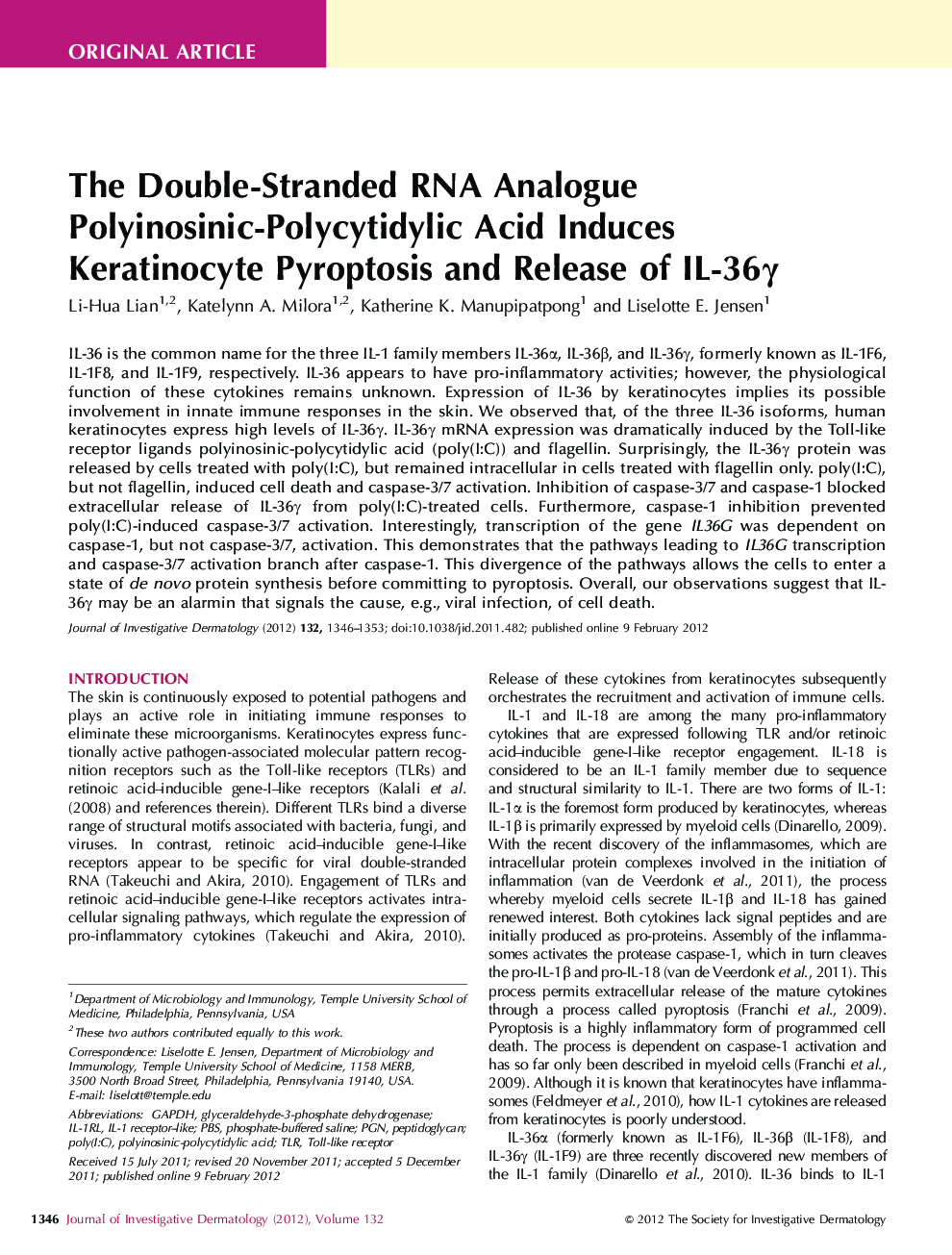| کد مقاله | کد نشریه | سال انتشار | مقاله انگلیسی | نسخه تمام متن |
|---|---|---|---|---|
| 3215630 | 1203538 | 2012 | 8 صفحه PDF | دانلود رایگان |

IL-36 is the common name for the three IL-1 family members IL-36α, IL-36β, and IL-36γ, formerly known as IL-1F6, IL-1F8, and IL-1F9, respectively. IL-36 appears to have pro-inflammatory activities; however, the physiological function of these cytokines remains unknown. Expression of IL-36 by keratinocytes implies its possible involvement in innate immune responses in the skin. We observed that, of the three IL-36 isoforms, human keratinocytes express high levels of IL-36γ. IL-36γ mRNA expression was dramatically induced by the Toll-like receptor ligands polyinosinic-polycytidylic acid (poly(I:C)) and flagellin. Surprisingly, the IL-36γ protein was released by cells treated with poly(I:C), but remained intracellular in cells treated with flagellin only. poly(I:C), but not flagellin, induced cell death and caspase-3/7 activation. Inhibition of caspase-3/7 and caspase-1 blocked extracellular release of IL-36γ from poly(I:C)-treated cells. Furthermore, caspase-1 inhibition prevented poly(I:C)-induced caspase-3/7 activation. Interestingly, transcription of the gene IL36G was dependent on caspase-1, but not caspase-3/7, activation. This demonstrates that the pathways leading to IL36G transcription and caspase-3/7 activation branch after caspase-1. This divergence of the pathways allows the cells to enter a state of de novo protein synthesis before committing to pyroptosis. Overall, our observations suggest that IL-36γ may be an alarmin that signals the cause, e.g., viral infection, of cell death.
Journal: Journal of Investigative Dermatology - Volume 132, Issue 5, May 2012, Pages 1346–1353